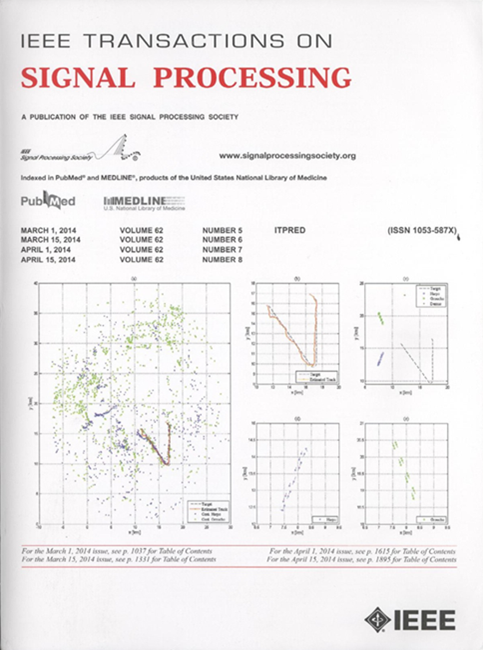扩展图的在线图过滤
IF 4.6
2区 工程技术
Q1 ENGINEERING, ELECTRICAL & ELECTRONIC
引用次数: 0
摘要
图滤波器是在众多下游任务中处理图上信号的主要工具。然而,它们通常是针对具有固定节点数的图而设计的,尽管现实世界中的网络通常会随着时间的推移而增长。这种拓扑演化通常以随机模型为基础,因此,传统的图滤波器无法承受这种拓扑变化、其不确定性以及输入数据的动态性质。为了解决这些问题,我们提出了一种依靠在线学习原理的在线图过滤框架。我们为拓扑既已知又未知的情况设计了过滤器,包括一个适应这种演变的学习器。我们进行了遗憾分析,以强调在线算法、过滤顺序和增长图模型等不同组件所发挥的作用。利用合成数据和真实数据进行的数值实验证实了针对图信号推理任务提出的方法,并显示出与基线和最先进的替代方法相比具有竞争力的性能。本文章由计算机程序翻译,如有差异,请以英文原文为准。
Online Graph Filtering Over Expanding Graphs
Graph filters are a staple tool for processing signals over graphs in a multitude of downstream tasks. However, they are commonly designed for graphs with a fixed number of nodes, despite real-world networks typically grow over time. This topological evolution is often known up to a stochastic model, thus, making conventional graph filters ill-equipped to withstand such topological changes, their uncertainty, as well as the dynamic nature of the incoming data. To tackle these issues, we propose an online graph filtering framework by relying on online learning principles. We design filters for scenarios where the topology is both known and unknown, including a learner adaptive to such evolution. We conduct a regret analysis to highlight the role played by the different components such as the online algorithm, the filter order, and the growing graph model. Numerical experiments with synthetic and real data corroborate the proposed approach for graph signal inference tasks and show a competitive performance w.r.t. baselines and state-of-the-art alternatives.
求助全文
通过发布文献求助,成功后即可免费获取论文全文。
去求助
来源期刊

IEEE Transactions on Signal Processing
工程技术-工程:电子与电气
CiteScore
11.20
自引率
9.30%
发文量
310
审稿时长
3.0 months
期刊介绍:
The IEEE Transactions on Signal Processing covers novel theory, algorithms, performance analyses and applications of techniques for the processing, understanding, learning, retrieval, mining, and extraction of information from signals. The term “signal” includes, among others, audio, video, speech, image, communication, geophysical, sonar, radar, medical and musical signals. Examples of topics of interest include, but are not limited to, information processing and the theory and application of filtering, coding, transmitting, estimating, detecting, analyzing, recognizing, synthesizing, recording, and reproducing signals.
 求助内容:
求助内容: 应助结果提醒方式:
应助结果提醒方式:


